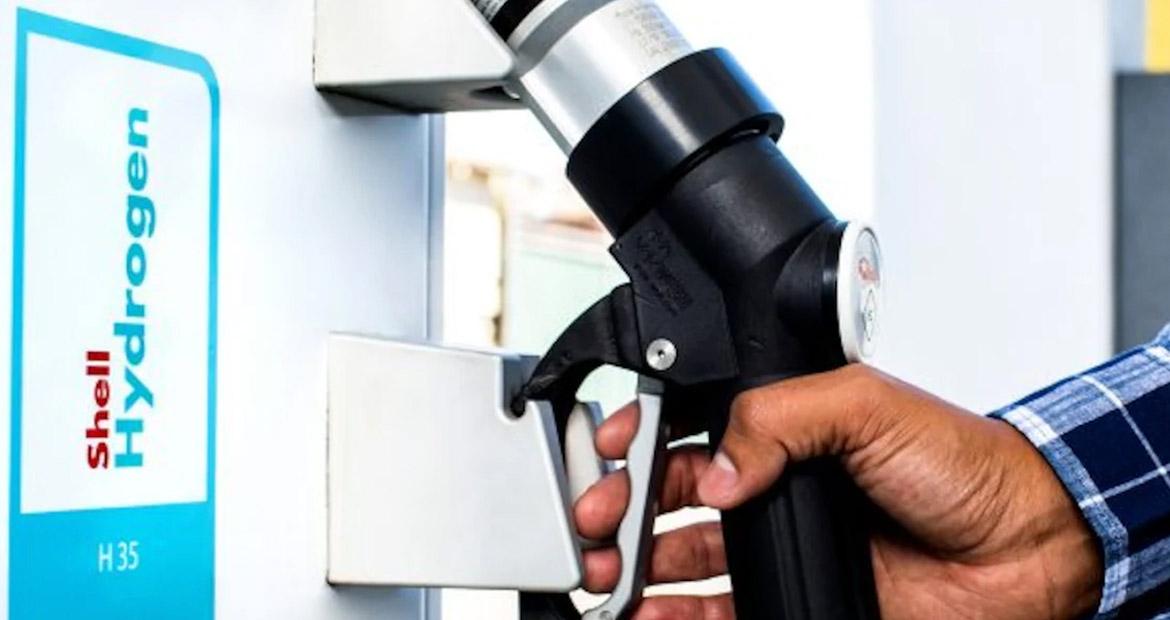Growing Interest in Grading Hydrogen
Published 08-30-24
Submitted by Cummins, Inc.

by Tom Quimby, On-highway Journalist
Knowing the fuel used for hydrogen fuel cells and hydrogen internal combustion engines (H2-ICE) is just as important as knowing the powertrains themselves. Fuel can impact not only performance but also a fleet’s green profile.
Several terms are used to identify hydrogen and for various reasons. Different agencies, industries and entities involved in the use and production of hydrogen have begun categorizing it either by carbon intensity or with colors such as green, blue, grey and pink.
While hydrogen is the most prolific element in the universe, it must be extracted from sources like water, methane and oil which require various production methods and energy needs.
Depending on the source of hydrogen and how it’s produced, undesirable emissions like carbon monoxide and carbon dioxide can occur. The cleaner the source of energy used to produce hydrogen, the better its well-to-wheels carbon profile.
To help get a better grasp on the climate change impact of the hydrogen that will power H2-ICE and fuel cells, look at color codes and carbon intensity scores. Each has a role to play as industry and government stakeholders work to set standards for this emerging fuel which has been shown to slash emissions while meeting the challenging demands of medium and heavy-duty trucking.
Being aware of variations in hydrogen production through color codes and carbon scores can help fleets more effectively reach environmental, social and governance (ESG) goals which according to McKinsey & Company can reduce risk and attract investors.
“The color wheel has traction and those that have been using it default to it,” said Tom Swenson, Director of Global Regulatory Affairs at Cummins Inc. “But you need a number to do the math to say, ‘here’s my carbon score,’ for whatever you’re trying to calculate. If it’s for ESG you need a number.”
Isabel Castro, Electrolyzer Marketing Director at Accelera™ by Cummins, pointed out the value of categorizing hydrogen by colors while leaning on carbon intensity scores as the final arbiter.
“Color coding is helpful and easy to understand and thus makes it easy to spread awareness of the different types of hydrogen production,” Castro said.
While colors can be helpful to initially differentiate hydrogen sourcing and production methods, carbon intensity values provide a more precise evaluation since, as Castro explained, “color coding alone is not sufficient to provide the real carbon footprint.”
Contaminants in hydrogen are also a factor especially for fuel cells which require a purer fuel than H2-ICE. Failing to recognize contaminants will hinder fuel cell performance.
“There will be two different [hydrogen] fuel specs. Fuel cell will have a fuel spec, and the hydrogen engine will have a fuel spec,” explained Jim Nebergall, Executive Director of Market Strategy at Cummins. “The main difference is that fuel cells require very pure fuel, sometimes referred to as “five 9s purity” which means 99.999% pure. An engine isn't as sensitive to those impurities as a fuel cell.”
Making sense of hydrogen’s colors
Besides looking out for impurities in hydrogen, it’s critical to keep an eye on the fuel’s environmental impact.
Color coding can quickly identify hydrogen in terms of its sustainable value. Accelera has provided a look at some of the more popular colors used to categorize the fuel:
Green hydrogen: Obtained from water through electrolysis powered by renewable energy sources like solar, wind and hydropower. This is the only type of hydrogen that produces zero emissions during production. High costs of manufacturing are expected to drop as innovations in the arena grow. Accelera focuses on green hydrogen production through both alkaline and proton exchange membrane (PEM) electrolyzers.
Yellow hydrogen: A type of green hydrogen produced with solar power.
Grey hydrogen: Comprises 95% of hydrogen production in the United States. Natural gas, usually methane, is paired up with high-temperature steam under pressure (steam methane reforming, or SMR) which renders hydrogen. Greenhouse gas byproducts include carbon monoxide and carbon dioxide not captured during production.
Blue hydrogen: Similar to grey hydrogen except that carbon capture and storage (CSS) sequesters carbon dioxide underground. Methane and hydrogen leaks from storage pockets are a concern and there is still debate on whether CSS combined with SMR is actually a low carbon process.
Turquoise hydrogen: Falling between green and blue hydrogen, turquoise is produced through methane pyrolysis, a high-temperature process that converts methane into hydrogen gas and solid carbon like coal or biomass in the presence of a catalyst. No carbon monoxide or carbon dioxide emissions are created.
Pink hydrogen: Like green hydrogen except nuclear energy is used to fuel electrolysis either through electricity or from steam rendered through the production of such nuclear energy. That steam can also be used for SMR to obtain hydrogen from natural gas.
Brown and black hydrogen: Hydrogen obtained from either brown or black coal. Though black coal releases less carbon dioxide, the gasification of coal is the most environmentally damaging.
White hydrogen: Naturally occurring hydrogen found in underground deposits. It’s also known as gold hydrogen when found in depleted oil wells where fermenting microbes produce the gas.
When numbers count
As Tom Swenson noted there have been a growing number of colors being assigned to hydrogen. Some stakeholders have found the array confusing as it does not offer a value that can be accurately calculated for ESG. Access to the Department of Energy’s (DOE) clean hydrogen production tax credit also deems color coding unnecessary.
DOE does not use colors to define hydrogen. The department refers instead to carbon intensity values in its U.S. National Clean Hydrogen Strategy and Roadmap.
“DOE does not use color definitions of hydrogen and focuses on enabling clean hydrogen from multiple pathways where the priority is to reduce carbon intensity,” an emailed statement from DOE reads.
The California Air Resources Board (CARB) also uses carbon intensities to assess hydrogen. Through its Low Carbon Fuel Standard (LCFS) program, CARB has published monthly carbon intensity values of various transportation fuels including hydrogen.
Hydrogen has consistently posted some of the lowest carbon scores among the 17 fuels currently analyzed by CARB.
“LCFS does a fantastic job of doing that analysis and giving a number where everybody says, ‘okay, I understand what that means’,” Swenson said.

Cummins, Inc.
Cummins, Inc.
Cummins Inc., a global power leader, is a corporation of complementary business segments that design, manufacture, distribute and service a broad portfolio of power solutions. The company’s products range from diesel, natural gas, electric and hybrid powertrains and powertrain-related components including filtration, aftertreatment, turbochargers, fuel systems, controls systems, air handling systems, automated transmissions, electric power generation systems, batteries, electrified power systems, hydrogen generation and fuel cell products. Headquartered in Columbus, Indiana (U.S.), since its founding in 1919, Cummins employs approximately 61,600 people committed to powering a more prosperous world through three global corporate responsibility priorities critical to healthy communities: education, environment and equality of opportunity.
More from Cummins, Inc.

